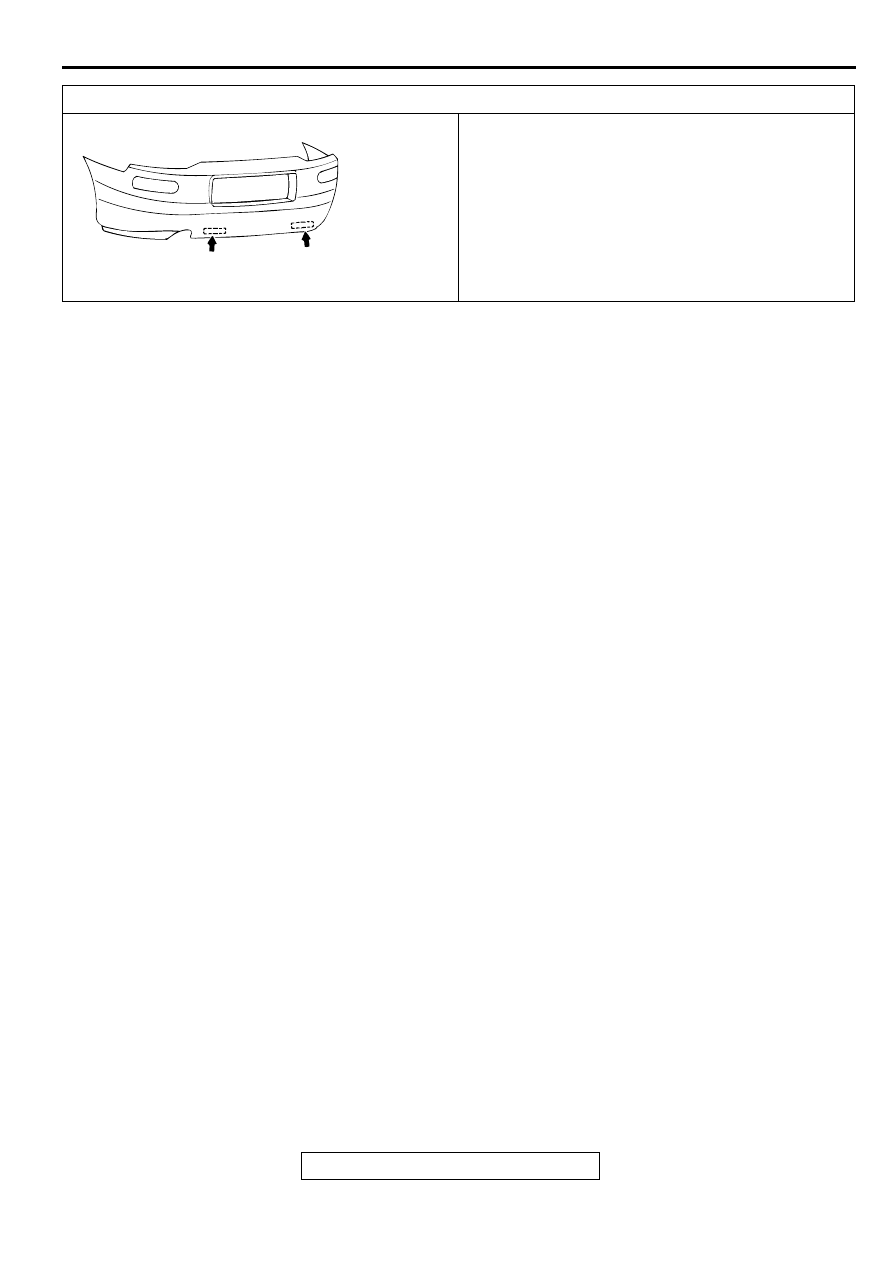Mitsubishi Eclipse / Eclipse Spyder (2000-2002). Service and repair manual - part 6

PRECAUTIONS BEFORE SERVICE
TSB Revision
GENERAL <BODY AND CHASSIS>
00-21
PR ECA U TIO N S BEFO R E SERVIC E
M1001000500088
SUPPLEMENTAL RESTRAINT SYSTEM
(SRS)
1. Items to follow when servicing SRS
(1) Be sure to read GROUP 52B, Supplemental
Restraint System (SRS). For safe operation,
please follow the directions and heed all
warnings.
(2) Wait at least 60 seconds after disconnecting
the battery cable before doing any further
work. The SRS system is designed to retain
enough voltage to deploy the air bag even
after the battery has been disconnected.
Serious injury may result from unintended air
bag deployment if work is done on the SRS
system immediately after the battery cable is
disconnected.
(3) Warning labels must be heeded when
servicing or handling SRS components.
Warning labels can be found in the following
locations.
•
Hood
•
Sun visor
•
Glove box
•
SRS-ECU
•
Steering wheel
•
Air bag module (Driver's side or front
passenger's side)
•
Side air bag module
•
Clock spring
•
Steering gear box
(4) Always use the designated special tools and
test equipment.
(5) Store components removed from the SRS in a
clean and dry place. The air bag module
should be stored on a flat surface and placed
so that the pad surface is facing upward.
(6) Never attempt to disassemble or repair the
SRS components (SRS-ECU, air bag module
and clock spring). If there is a defect, replace
the defective part.
(7) Whenever you finish servicing the SRS, check
the SRS warning light operation to make sure
that the system functions properly.
(8) Be sure to deploy the air bag before disposing
of the air bag module or disposing of a vehicle
equipped with an air bag. (Refer to GROUP
52B
, Air Bag Module Disposal
Procedures.)
2. Observe the following when carrying out
operations on places where SRS components are
installed, including operations not directly related
to the SRS air bag.
(1) When removing or installing parts, do not
allow any impact or shock to the SRS
components.
(2) SRS components should not be subjected to
temperatures of over 93
°
C (200
°
F), so remove
the SRS components before drying or baking
the vehicle after painting. After re-installing
them, check the SRS warning light operation
to make sure that the system functions
properly.
TARGET AREA (A: FOR ORIGINAL EQUIPMENT PARTS, B: FOR REPLACEMENT PARTS)
AC000069AB
REAR BUMPER
A
B